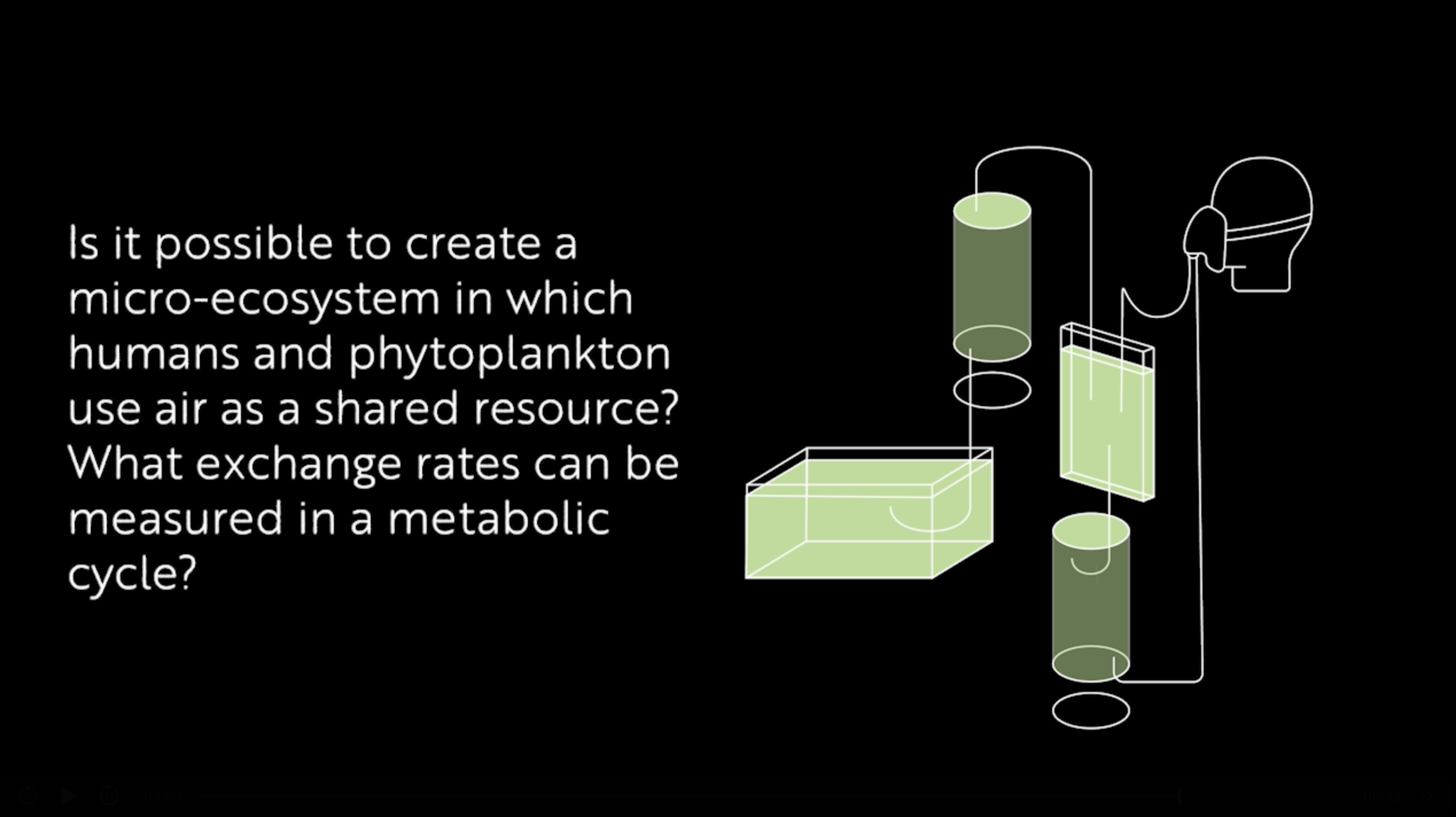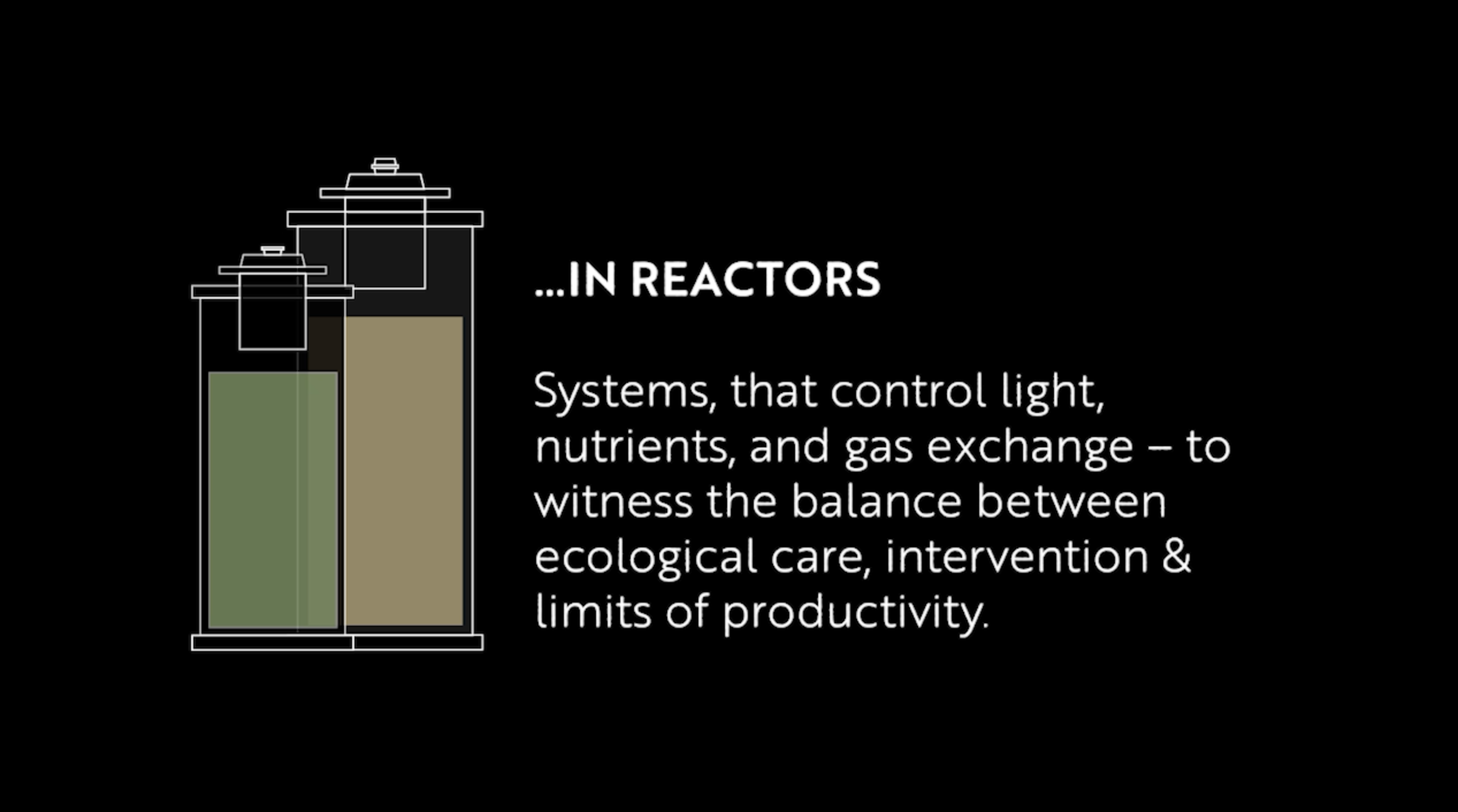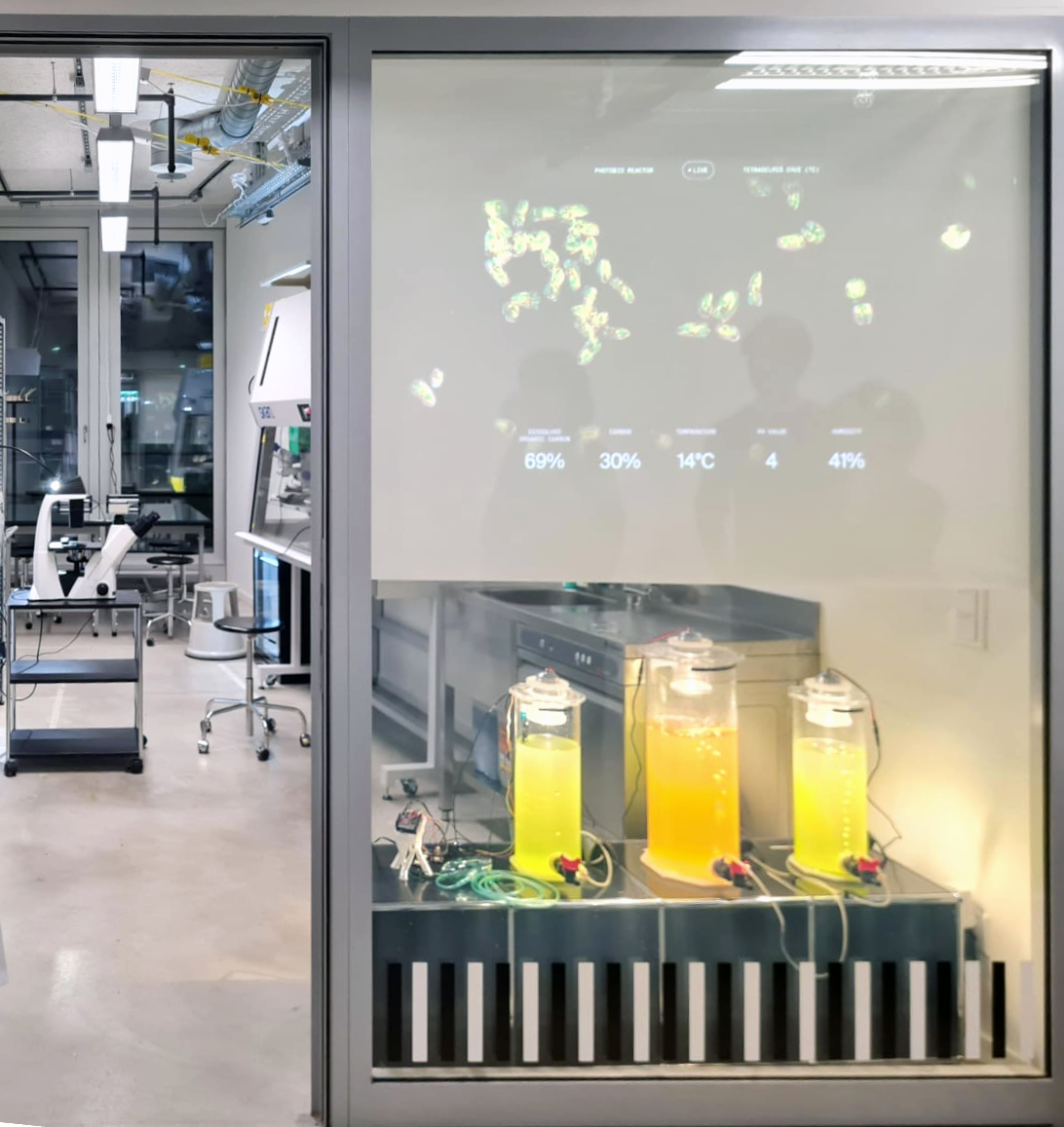PAR - Plankton Atmosphere Resonance - Prototype Testing
Observation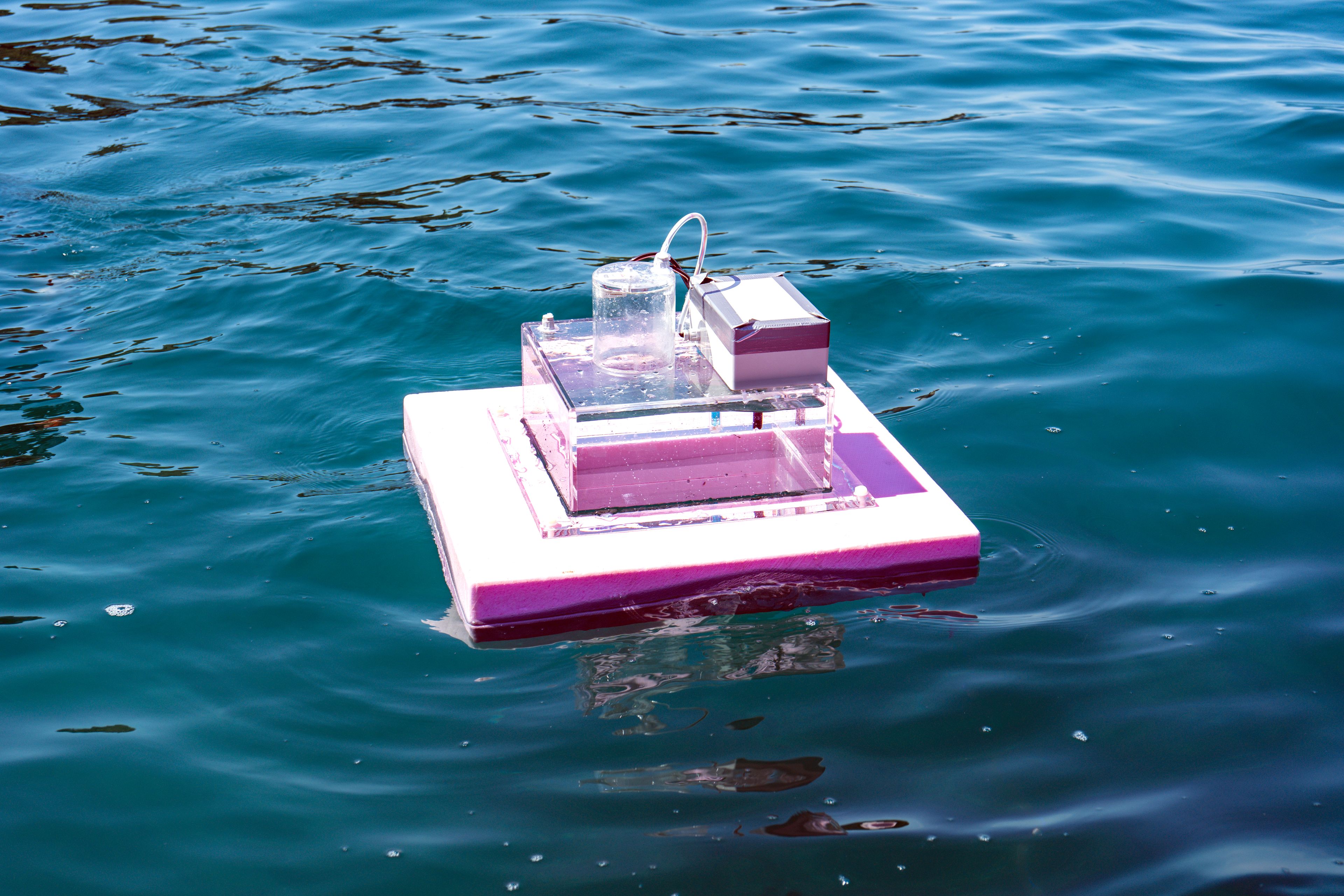
PAR - Plankton Atmosphere Resonance
Inverted aquarium for breathing with, for and nearby plankton
Plankton Atmosphere Resonance (PAR) extends the logic of the aquarium into open water. A transparent chamber, inverted and floating on the sea’s surface, becomes a shared atmosphere for plankton and human breath. Environmental sensors record the fluctuations of oxygen and CO₂, translating the coupling into data and resonance.
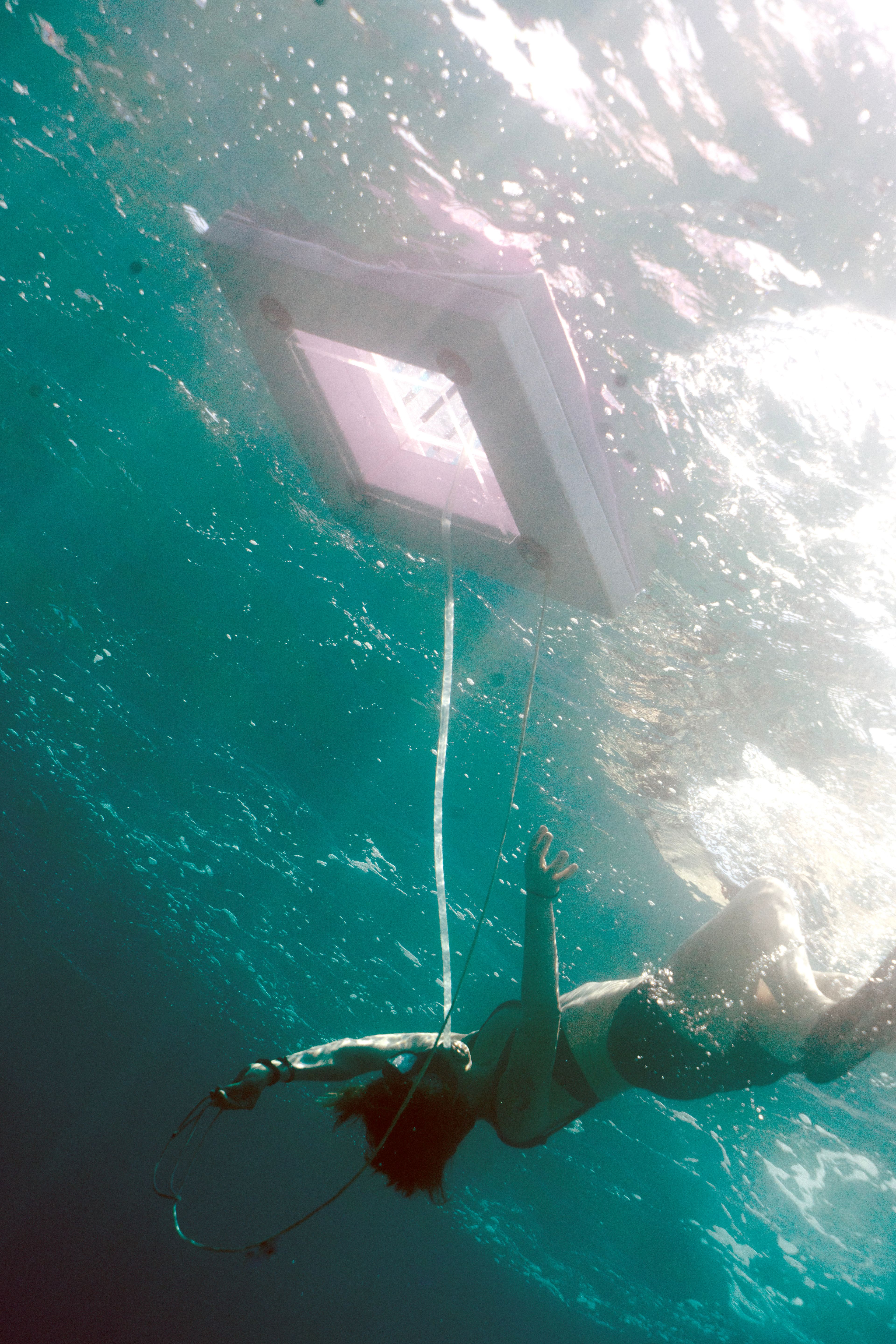
As a speculative prototype, PAR underscores the asymmetry and impossibility of perfect reciprocity across species and scales. It transforms respiration into a shared experiment, asking how we might imagine forms of care, attention, and cohabitation with plankton beyond the confines of the laboratory.
The first prototype was tested in the Adriatic Sea at Valsaline Bay, Pula, Croatia.
SENSING VALSALINE - sensor network for mapping of an urban bay (Pula, CRO)
Underwater PrototypeSENSING VALSALINE - sensor network for mapping the conditions of an urban bay
The fragile oceanic sites require techniques, tools and methods that can allow us map their physical and ecological conditions. These include the location's morphology as well as more ephemeral physical conditions, such as current patterns, temperature and light intensity.
Understanding a specific site enables us to discuss most suitable selection of species that can repopulate desolated seafloor and to plan related habitats.
We thus developed a custom-made underwater sensor system and installed it in the bay of Valsaline Pula, an urban site in which efforts to increase biodiversity have had modest success. Similarly to urban planning, the information about an underwater public site is to be shared with general public, researchers and other interested communities.
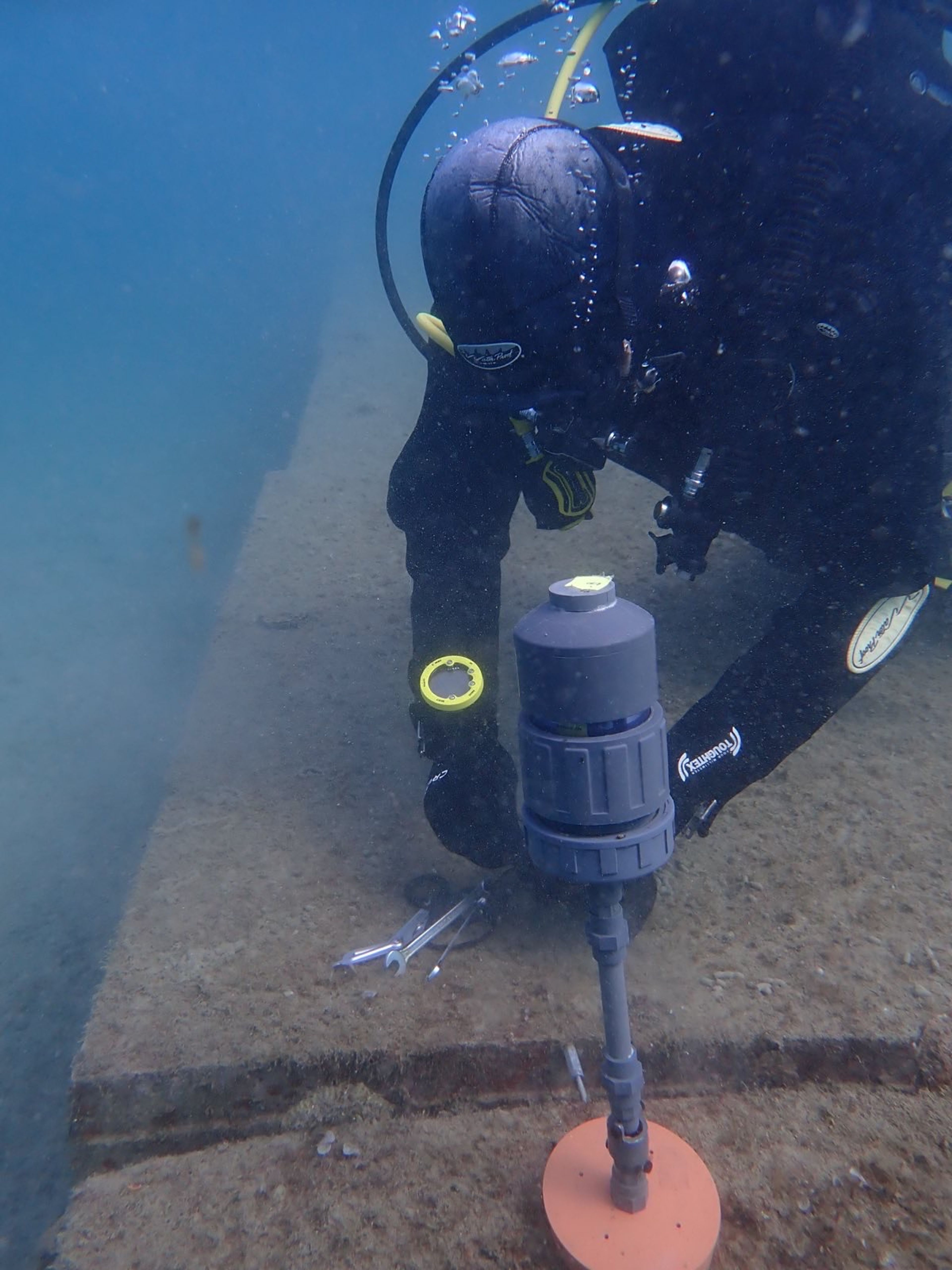
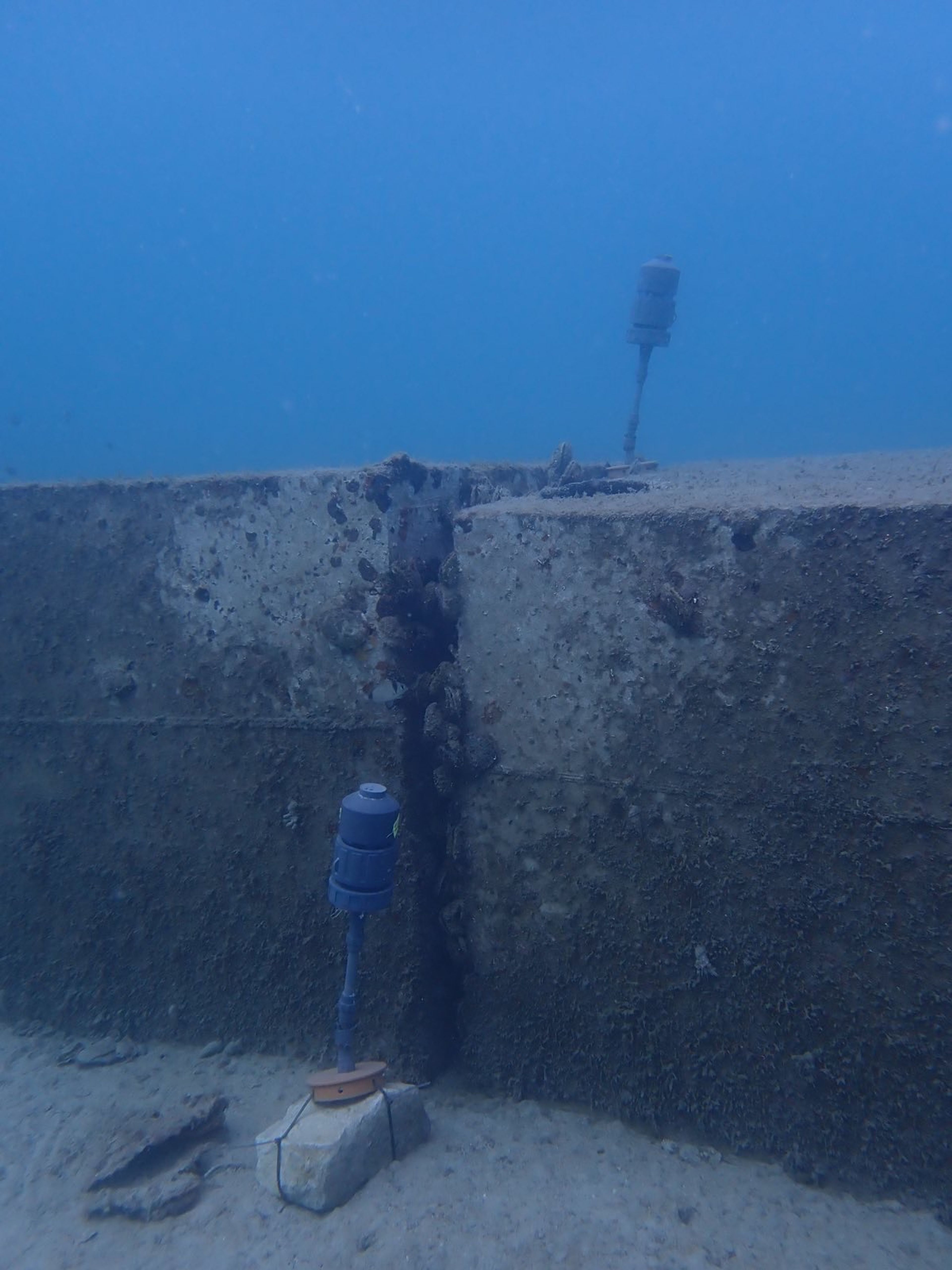
We have created a distributed sensor system that can track currents, light and temperature at different locations and combine this data to identify different underwater microclimatic locations that may require design intervention to provide habitat for different species. 20 custom-made underwater sensors were made to be installed at the top and two sides of the wall, at depths ranging from 6 to 30 metres, evenly distributed along the length of the wall. The first rounds of sensor prototypes were iteratively installed at depths of 6 to 14 metres. Due to the cold water temperature and the fragile 3D printed material, the prototypes proved not to be robust enough for extended monitoring. The second iteration of the sensor devices tested was designed to accommodate more battery power and 3D printed using a more robust material. This iteration will be installed in the bay in April 2025 and left submerged for five months.
SYNTOPOLIS - bioregional reef for STARESO (FR)
Underwater Prototype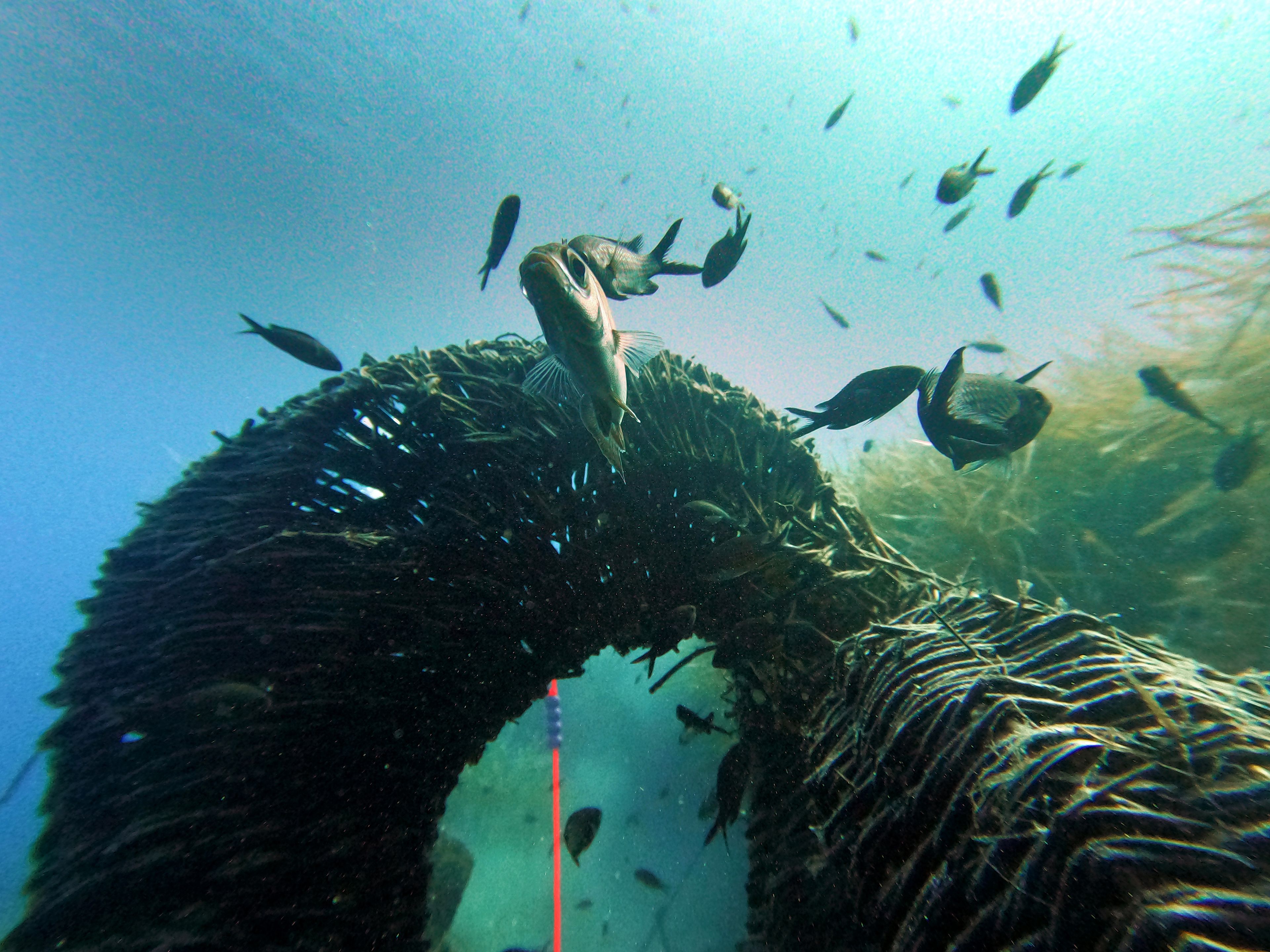
In the debate about the restoration of threatened marine habitats, local habitats in the Mediterranean region are often overlooked in favour of the conservation of coral reefs. Many people only know the seagrass Posidonia Oceanica as an ugly patch of brown algae that pollutes our pristine white beaches. It is all too often forgotten that Posidonia oceanica is a keystone species that determines the symbiotic interaction of a wide range of marine life1 and is one of the most important carbon sinks in the Mediterranean.2
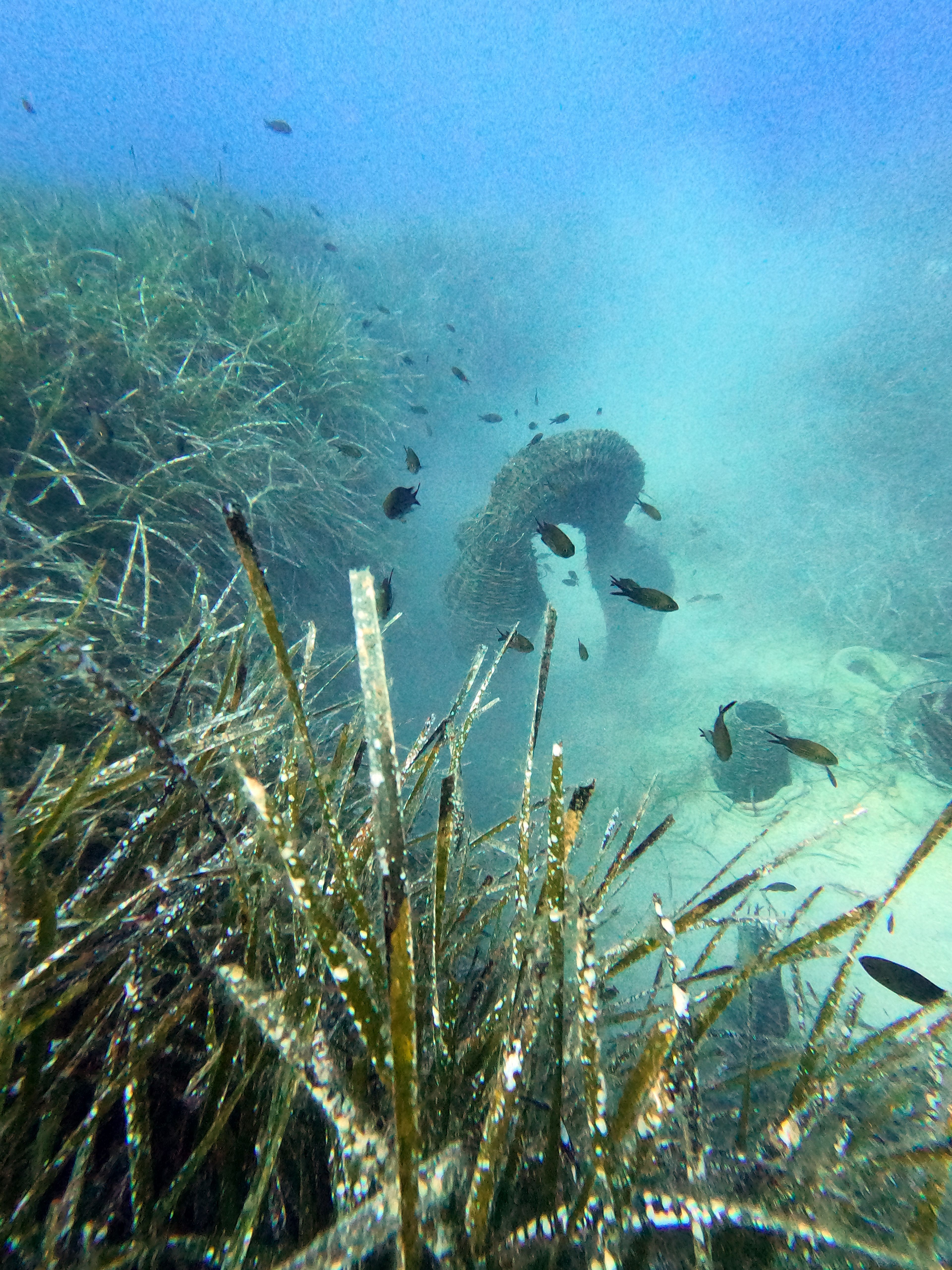
As part of the dissertation project «SymbiOcean» by doctoral candidate and young scientist Rasa Weber, the prototype «Syntopolis» deals with the restoration of Posidonia Oceanica seagrass meadows, as well as the symbiotic relationships of this key species in ecological interaction with other marine life in Alga Bay (Corsica, FR). The mechanical impact on Posidonia oceanica caused by human activity and the associated environmentally harmful anchoring techniques have led to a significant decline in seagrass meadows in the Mediterranean3 and can also be observed in Alga Bay.4 Since 2022, the team at the marine research station STARESO - Station de Recherche Océanographiques et sous-marines on the north coast of Corsica, and PhD student Arnaud Boulenger from Sylvie Gobert's research group (University of Liège) have been working on alternative restoration techniques for P. oceanica based on biodegradable fibres. 5
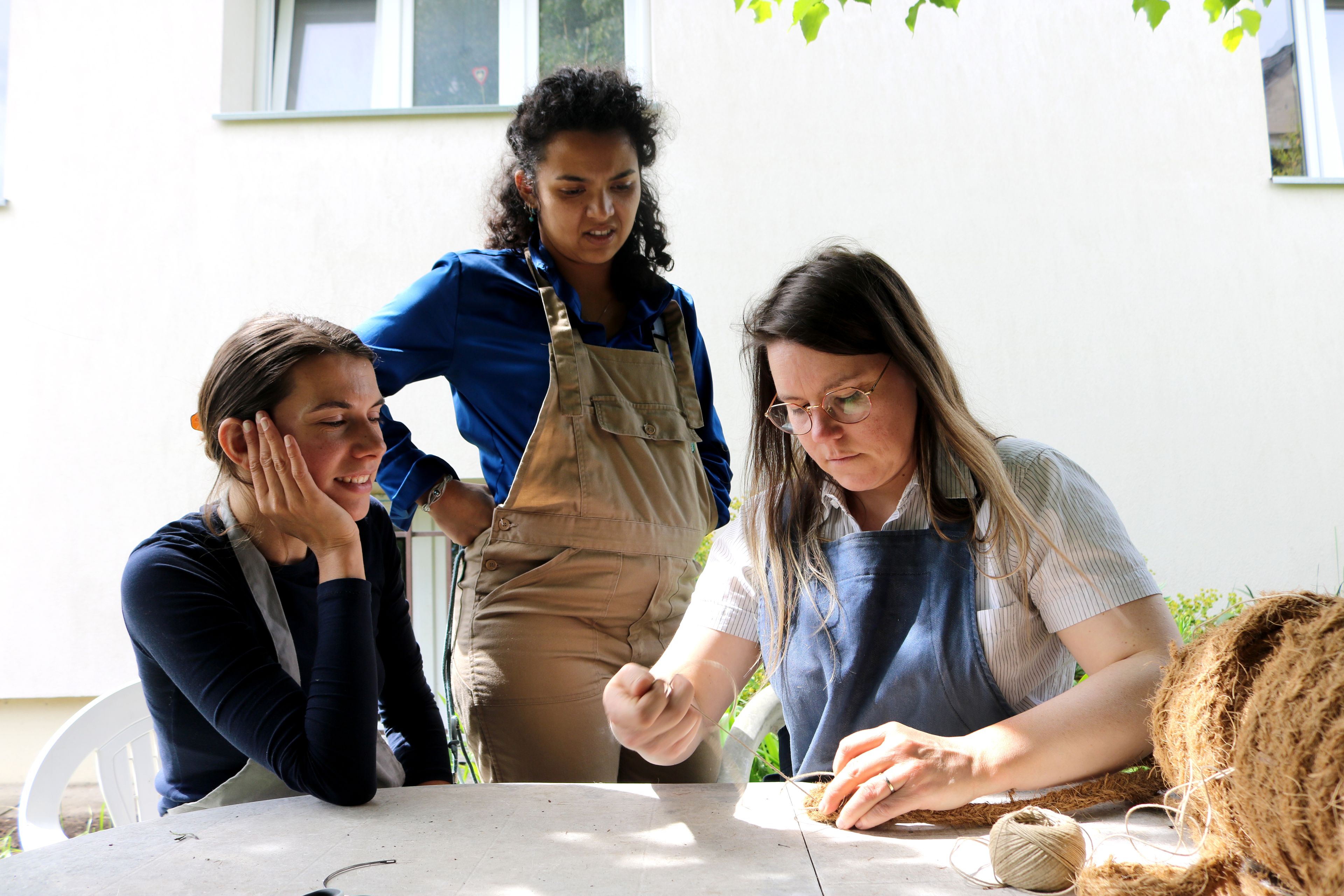
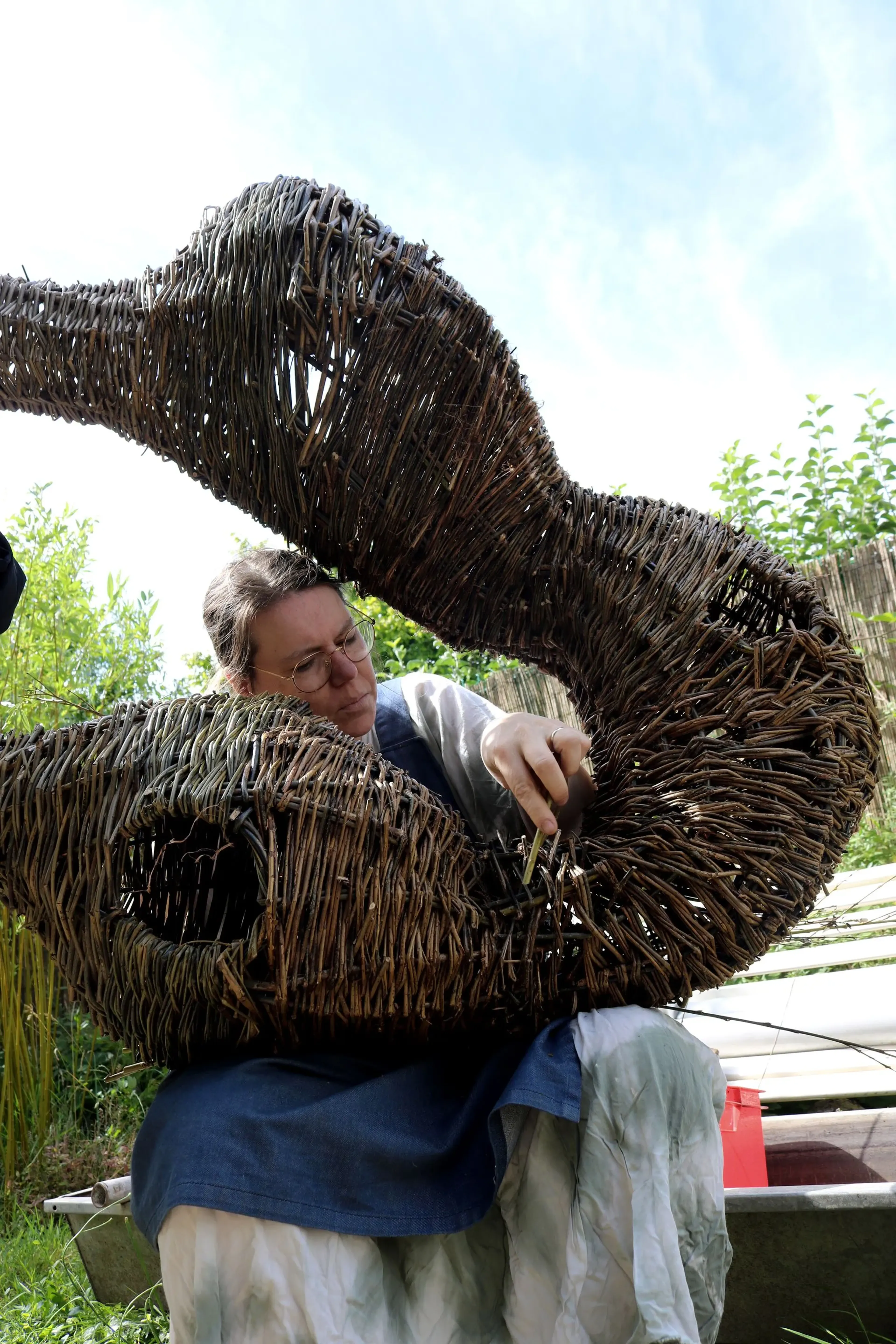
The first test results of this study are used by the project «SymbiOcean» of the designer Rasa Weber as a basis for the development of a design work in the sea. In collaboration with local craft businesses (weaving studio Atelier Marie Drouet) and technical collaboration with marine biology (STARESO), the installation «Syntopolis» was created based on natural fibres (wickerwork, hemp rope, coconut rope and recycled ship's rope). The aim is to achieve artistic and scientific collaboration on alternative restoration techniques in the Mediterranean to create new habitats for the endangered key species and their communities. In this process, Posidonia is not actively transplanted, but settles naturally together with fish (Chromis chromis, Serranus scriba et al.), sea snails and mussels, as well as other pioneer species («wild settlement»). The installation functions as an «open invitation»6 for a wide variety of creatures, including humans. Furthermore, the project methodically develops new starting points for interdisciplinary collaboration between research and «undisciplined»7 and local knowledge cultures. Coastal dwellers and their cultural techniques are the starting point for the development of a restorative cultural technique in the sense of the «biocultural identity» 8 of the coastal region in northern Corsica. The bioregion 9 is thus revitalised locally in order to involve diverse forms of knowledge and a wide range of living beings in the search for new cultural techniques for the preservation of the seas.
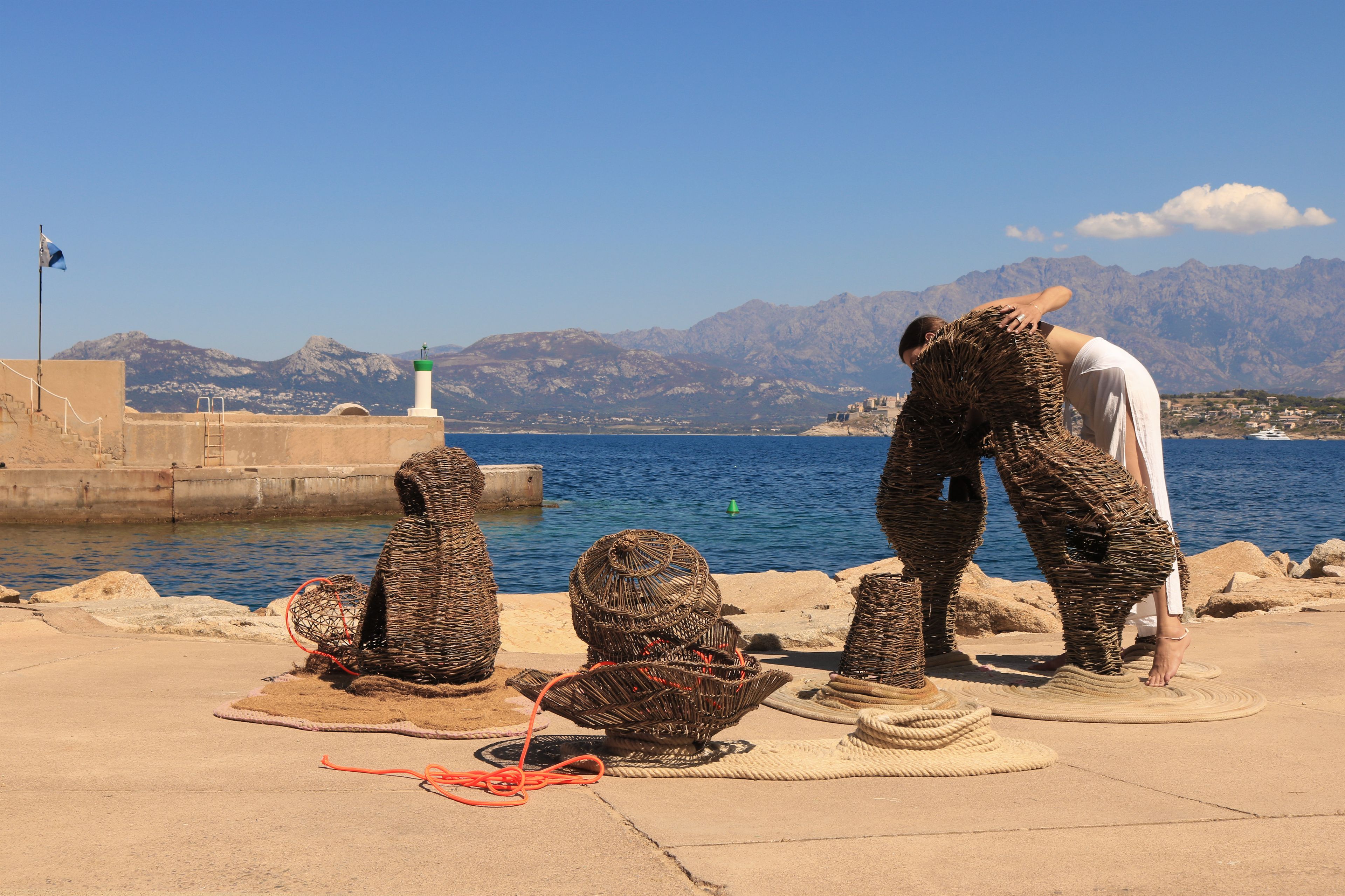
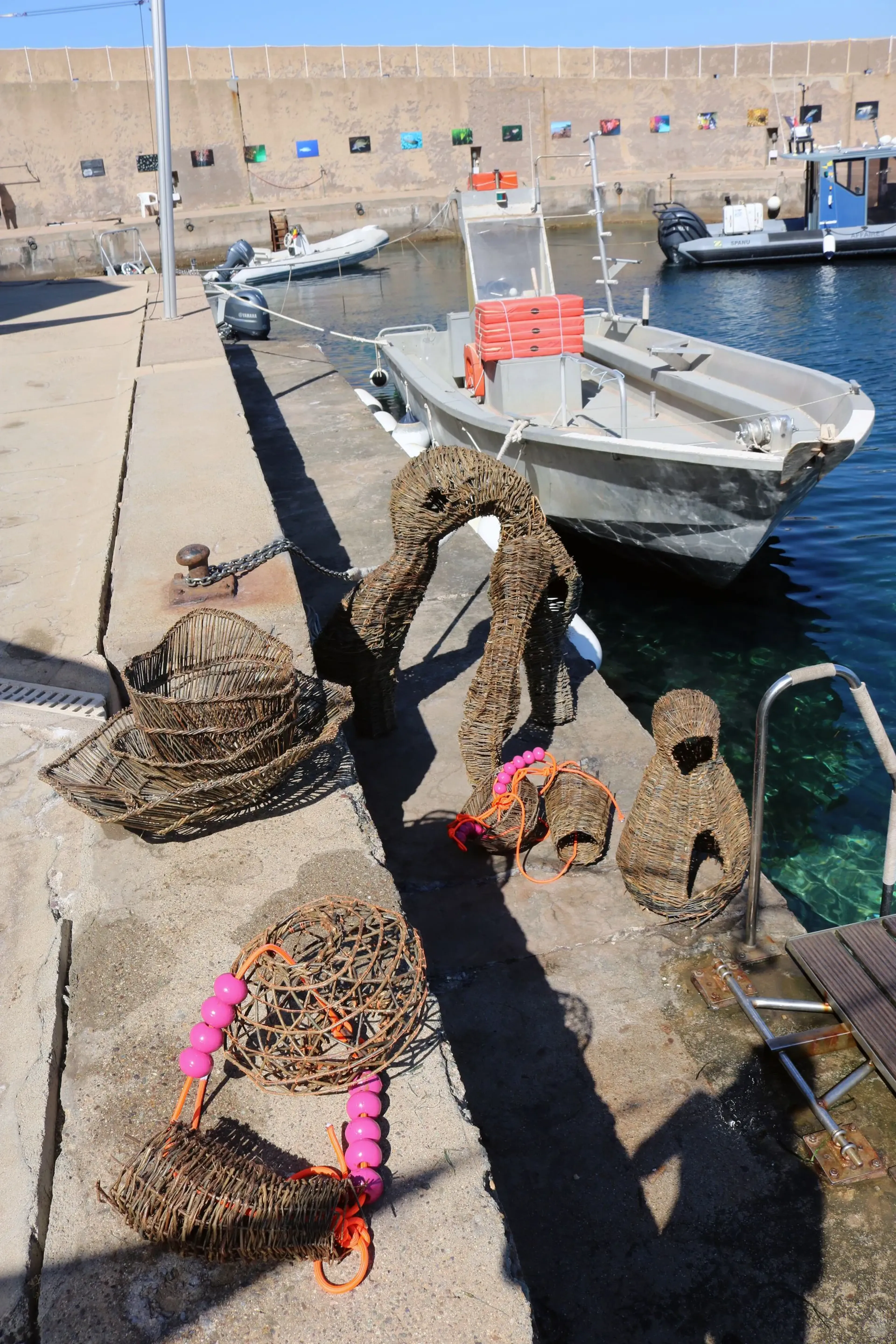
1 C.F. Boudouresque, N. Mayot, G. Pergent (2006) »The outstanding traits of the functioning of the Posidonia oceanica seagrass ecosystem«. In: Biol. Mar. Medit., 13 (4): 109-113.
2 Esteban Morelle-Hungría & Pablo Serra-Palao (2024). »Human impacts on Posidonia oceanica, a key species in the Mediterranean Sea«. In: Geoffrey Garver (ed.), Ecological Law in Practice, Routledge: 69-91.
3 A. P. Ganteaume, E. Bonhomme, E. Emery, G. Hervé, C.-F. Boudouresque (2005b) »Impact sur la prairie à Posidonia oceanicade l’amarrage des bateaux de croisière, au large du port de Porquerolles (Provence, France, Méditerranée) «. In : Sci. Rep. Port-Cros Natl. Park 21: 163–173.
And: Arnaud Abadie et al. (2016). »From mechanical to chemical impact of anchoring in seagrasses: The premises of anthropogenic patch generation in Posidonia oceanica meadows«, In: Mar. Pollut. Bull.; 109(1): 61-71.
4 Arnaud Abadie et al. (2016). Ibid.
5 Arnaud Boulenger et al. (2024), »Nature-based solutions for coastal protection in sheltered and exposed coastal waters: integrated monitoring program for baseline ecological structure and functioning assessment«, In: Environmental Monitoring and Assessment, 196 (316).
6A. Ståhl & K. Lindström (2020). »Politics of Inviting: Co-Articulations of Issues in Designerly Public«. In: R.C. Smith, T. K. Vangkilde et al. (2016.) Design Anthropological Futures, Routledge: 183–198.
7 Frédéric Darbellay (2015). »Rethinking inter- and transdisciplinarity: Undisciplined knowledge and the emergence of a new thought style«. In: Futures 65: 163-174.
8 Iain J. Davidson-Hunt, Katherine L. Turner et al. (2012). »Biocultural Design: A New Conceptual Framework for Sustainable Development in Rural Indigenous and Local Communities«. In: Sapiens 5 (2).
9 BC architects & studies (2024). »A Manual for Bioregional Design«. In: The Future Observatory Journal, Bioregioning 1.
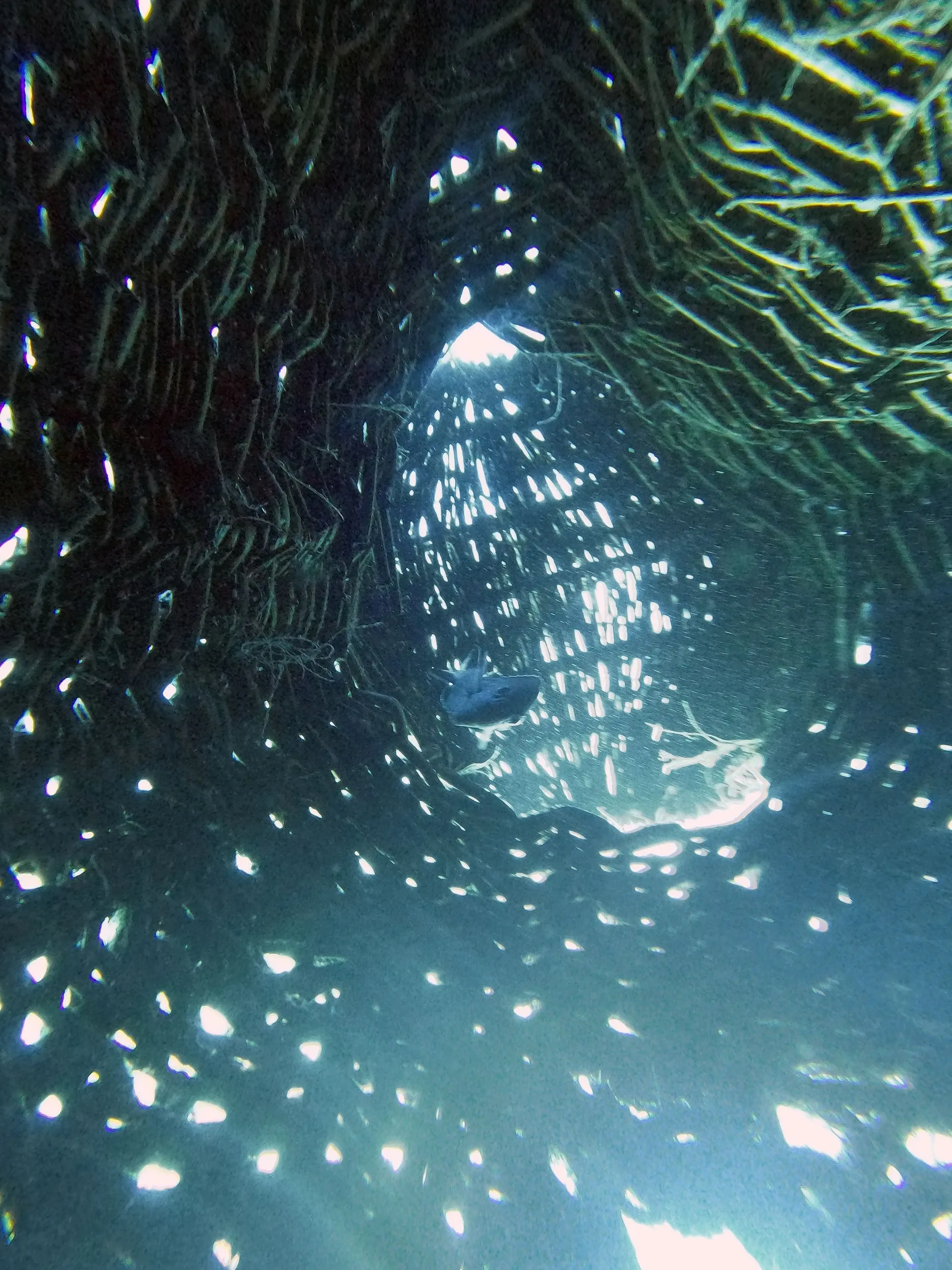
Credits
Design & Research: Rasa Weber
Co-Design and Production: Atelier Marie Drouet
Assistance Atelier Marie Drouet:
Elie Hascoet
Zélie Portoles
Eva Themyr
Lisa Pinot
Marion TaupinCamera:
Rasa Weber
Mélodie Chapat
Aubin Woehrel
Emma MendeScientific Monitoring:
Mélodie Chapat
Aubin WheelerDate: July 2024 - ongoing.
Location: STARESO - Station de Recherches Sous- marines et Océanographiques de Calvi Corsica (FR)
Production technique: traditional fish-trap weaves of reed
Material:
reedwork
hemp rope
coconut rope
recycled ship's ropeScientific Advice:
Arnaud Boulenger (University of Liège)
Michel Marengo (STARESO)
Sylvie Gobert (University of Liège)Divers:
Antoine Bertin (Interfacing the Ocean)
Mélodie Chapat (STARESO)
Giulio Cavalieri (STARESO)
Katinka Soller (Jordan Lab)
Emma Mende (UdK)
Anthea Oestreicher (Interfacing the Ocean)
Cristina Tarquini
Till Timmermann
Rasa Weber (Interfacing the Ocean)
Aubin Woehrel (STARESO)Research Project: PhD thesis «SymbiOcean»
SNF Project: «Interfacing the Ocean» (ZHdK)Collaborators:
Jordan Lab - Max Planck Institute of Animal Behavior
Zurich University of the Arts
Linz University of Art and Design
«Matters of Activity», Cluster of Excellence. Humboldt University of BerlinInternship: Emma Mende (University of the Arts Berlin, DE)
Photographers:
Mélodie Chapat
Emma Mende
Till Timmermann
Rasa Weber
Aubin WoehrelGrant Support:
Swiss National Science Fund (Interfacing the Ocean)
Transdisciplinary Artistic Program (ZHdK)
Traveling Grant University of Art and Design Linz (AT)
«Matters of Activity». Cluster of Excellence. Humboldt University of Berlin.All rights reserved. rasaweber.com © 2024.
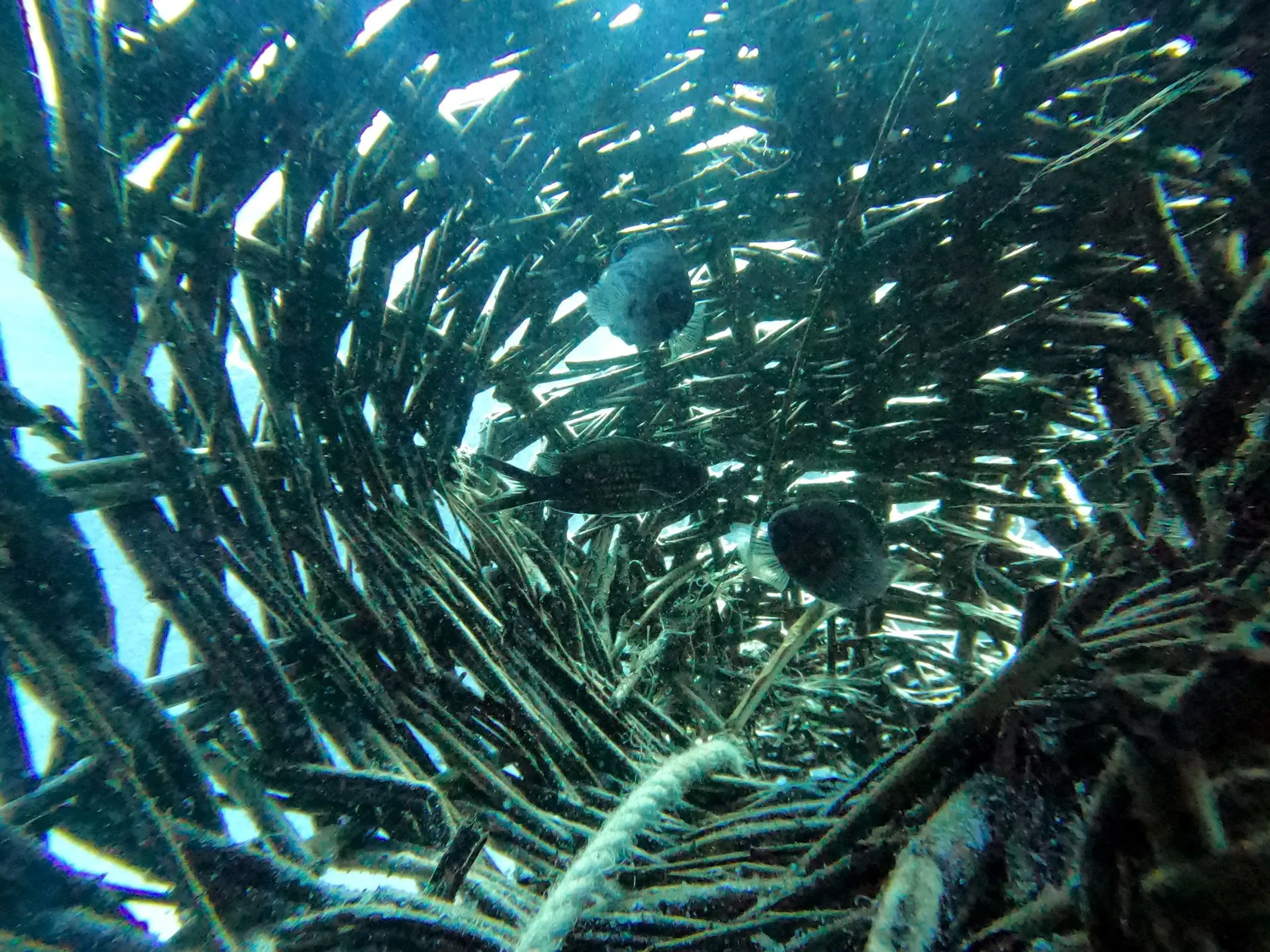
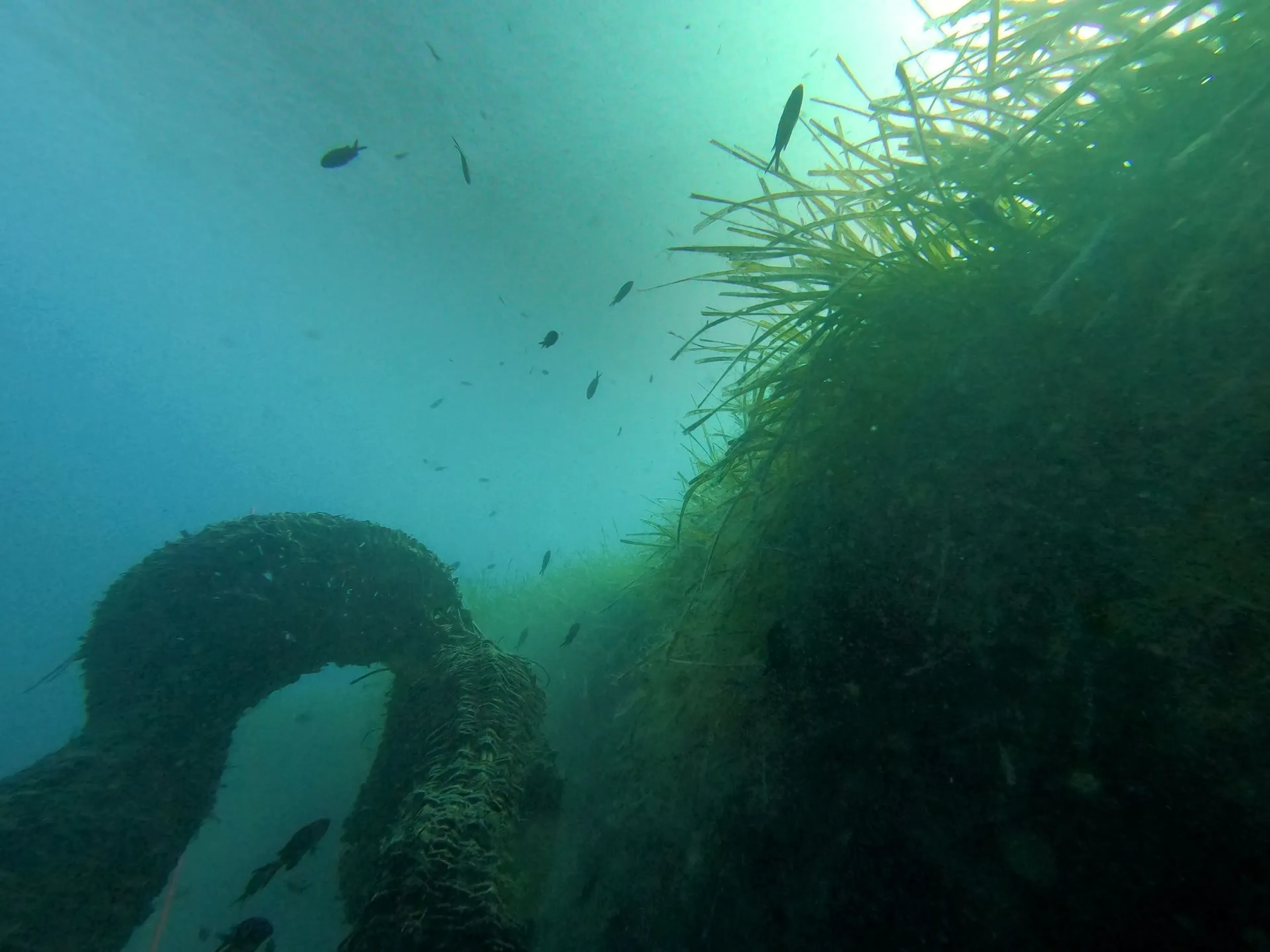
More info: rasaweber.com/syntopolis
Breathing with Photobioreactors
Laboratory PrototypeBreathing with Photobioreactors
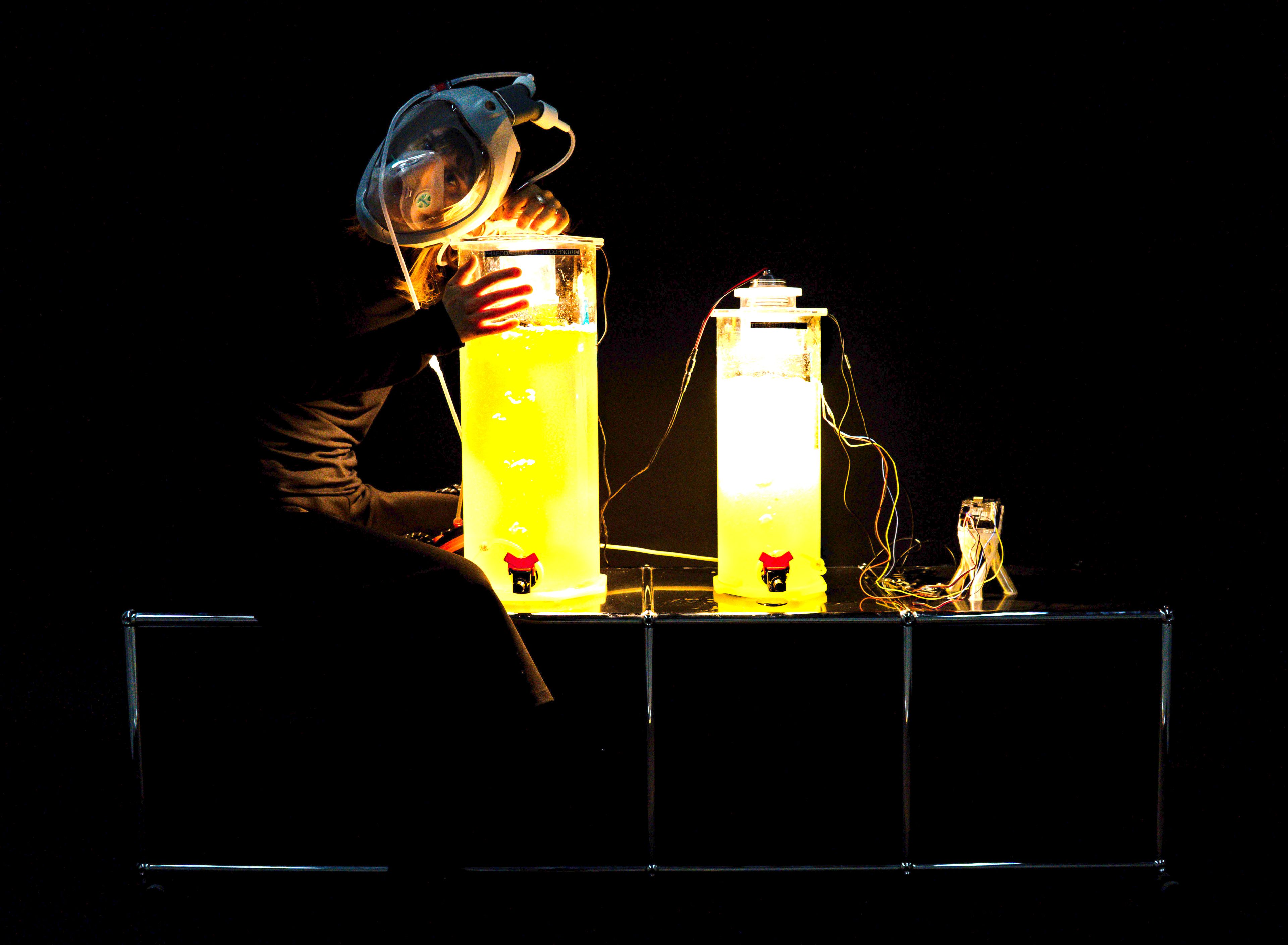
An experiment in interspecies respiration
How to feel 50% oxygen production, what is the scale of breathing? Where can a metabolic cycle between one another or rather a cycle of care emerge? How can we find a connection through boundaries? How can we not evolve together - but involve?
Breathing With stages a fragile encounter between human breath and planktonic life inside a laboratory environment. Using a modified algae bioreactor the intervention couples human respiration with the metabolic cycles of phytoplankton. The speculative experience of inhaling and exhaling through a mask connected to the reactor is a direct but asymmetrical exchange: carbon dioxide becomes nourishment for plankton, while plankton’s photosynthesis sustains the human breath.
Developed within Mobilis in Mobilis, Anthea’s ongoing research into planktonic ecologies, the project examines the laboratory as a site where containment intersects with care. The bioreactor becomes a speculative interface, emphasizing both the intimacy and impossibility of reciprocity between species. Rather than simulating a closed system, the work reframes respiration as a shared but uneven process.
It invites us to consider what it means to breathe with rather than extract from the ocean—turning the act of respiration into a gesture of attention, intimacy, and care.
KIKI - Reef Prototype in STARESO (FR)
Underwater PrototypeKIKI - Reef Prototype in STARESO
»Kiki« is the prototype of an artificial reef that provides a substrate and structure for pioneer organisms to form a habitat in the Mediterranean. It is based on the process mineral accretion in seawater by electrolysis, consists of conductive steel yarn and steel frames and is powered by a solar panel on land. During a six-month monitoring phase, the prototype was submerged in the bay of the marine biology research station STARESO - Station de Recherches Sous-marines et Océanographiques de Calvi in Corsica (FR).
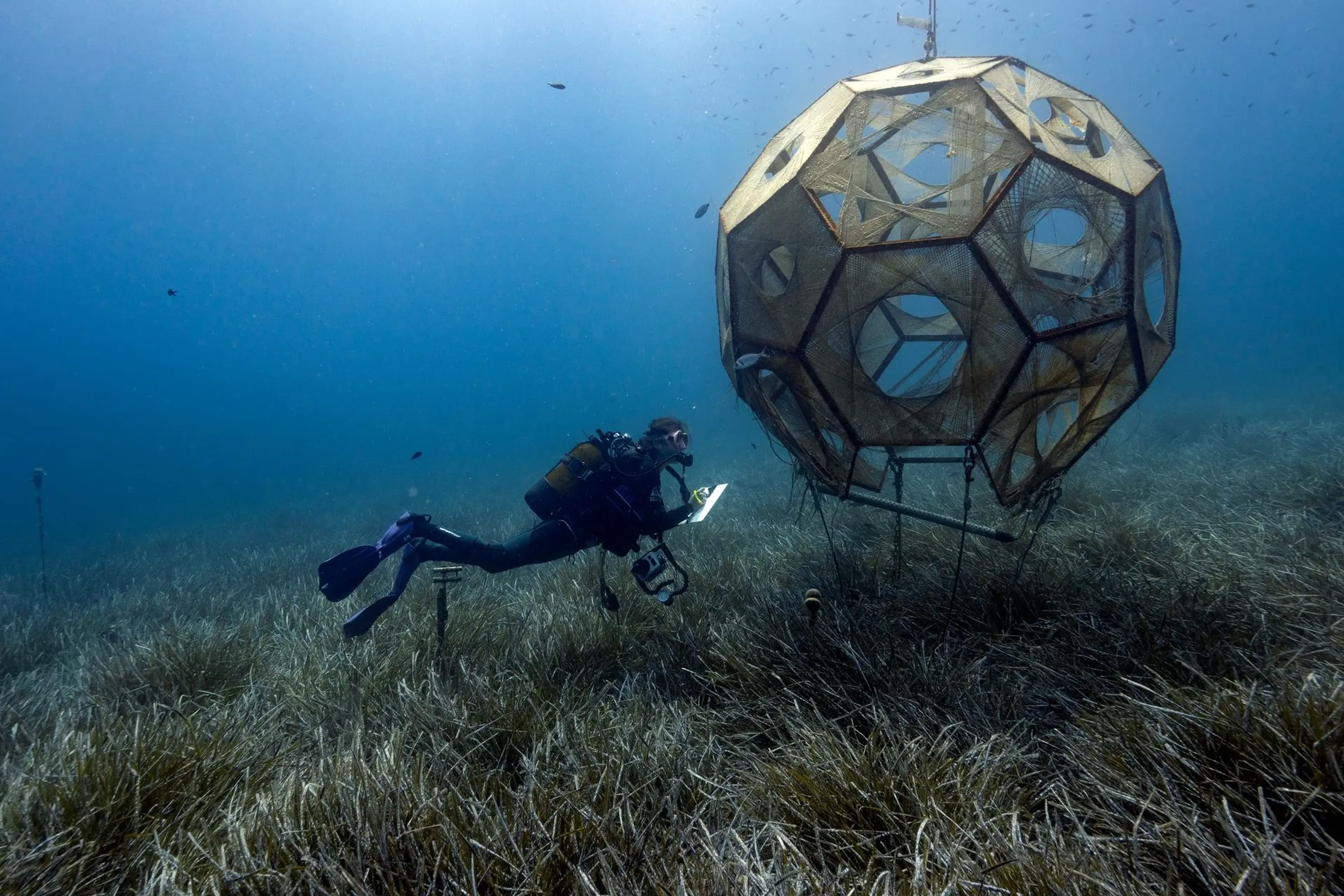
CREDITS: Kiki reef prototype in STARESO. rasaweber.com. Photo: Stéphane Jamme, @stepp_aquanaute. Diver: Noemie Chabrier. Location: STARESO (FRR), 2023.
The structure was created through the engagement of various participants who all contributed to its realization. At the pier of the scientific research station, marine biologists, divers, and even children were involved in weaving and assembling the large-scale prototype. The process could be described as a way of »weaving together« - as a shared co-design experience for the participants to literally weave together, but beyond that, the work interweaves the biological with the sociological dimension. After »Kiki’s« immersion in the bay, supported by a team of six divers and a boat, the structure was anchored at minus 10 meters and connected to a solar panel on land.
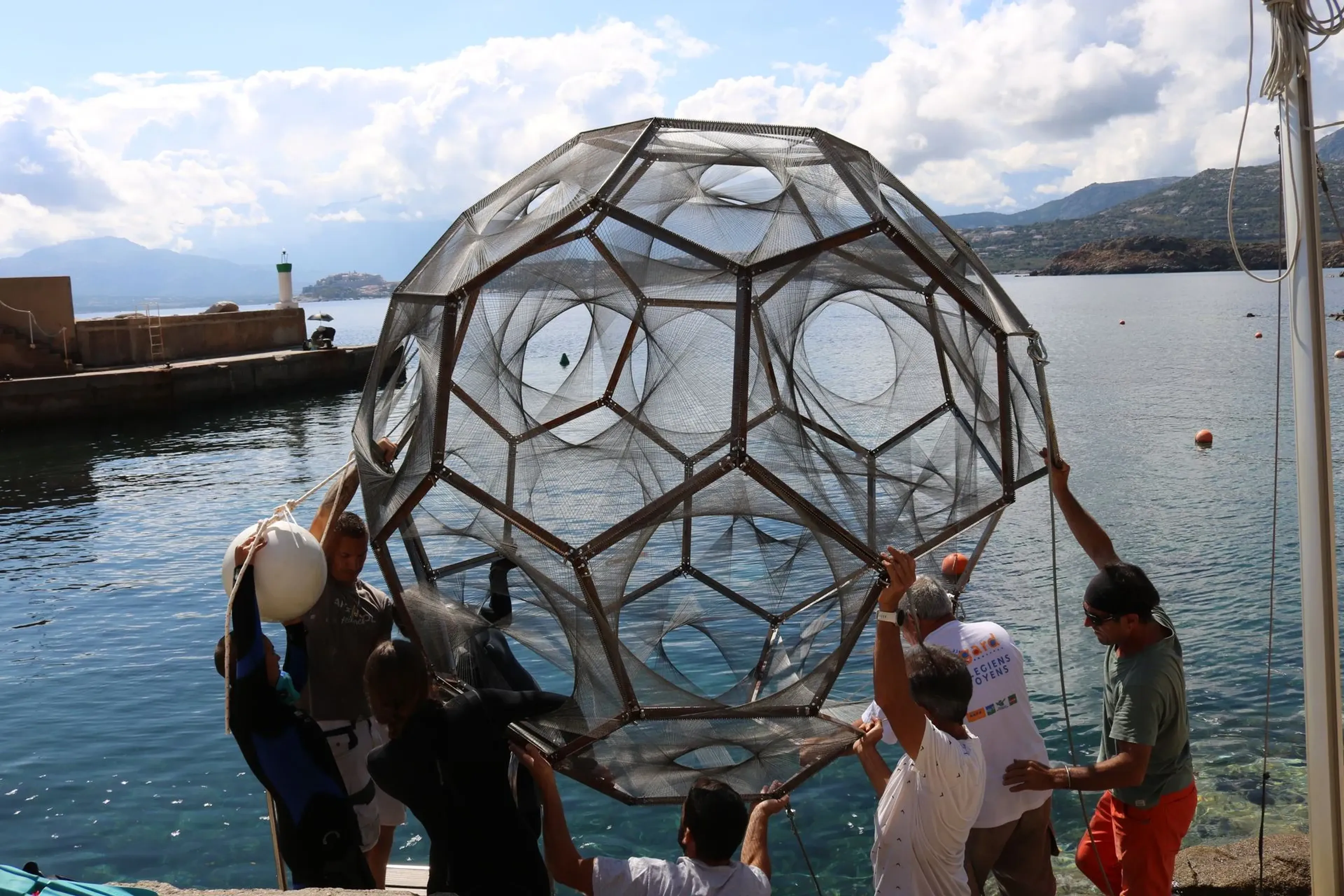
CREDITS: Kiki reef prototype in STARESO. rasaweber.com. Photo: Mathieu Kelhetter. Location: STARESO (FRR), 2023.
We might ask: Can design play an active role in the origin of life and thus influence the evolutionary history of the sea itself?
In 1970, the architect and self-taught oceanographer Wolf Hilbertz developed the »Biorock« principle in collaboration with the biochemist Tom Goreau. The material technology activates the accretion of seawater minerals on steel structures through electrolysis. By placing a positive and a negative pole in marine environments under low voltage current (the prototype »Kiki« acts as the negative pole), the technology enables the accumulation of limestone on conductive steel structures. Limestone is an ideal substrate for marine organisms and is therefore often used in the restoration of coral reefs. Hilbertz also dealt with his technology on a theoretical level by repeatedly fantasizing about a cybernetic system and omnipotent role of the designer in his academic reflection – named »cybertecture«. The designer as helmsman (ancient Greek kybernetes = helmsman) suggests the vision of a human-made and controllable evolutionary history in which evolutionary events can be steered.
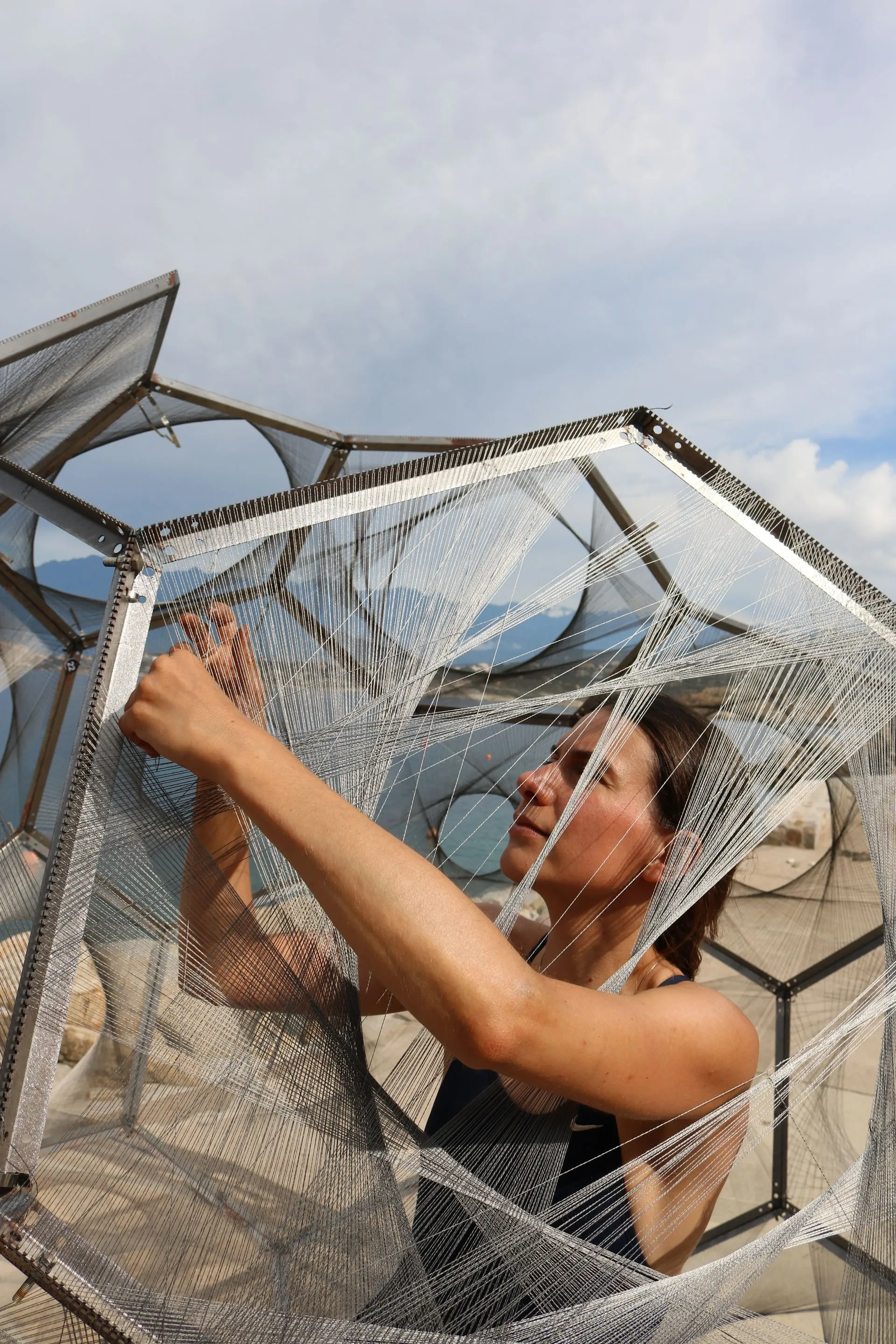
CREDITS: Kiki reef prototype in STARESO. rasaweber.com. Photo: Mathieu Kelhetter. Location: STARESO (FRR), 2023.
The theory of symbiogenesis by Lynn Margulis forms an antithesis to the cybernetic model proposed by Hilbertz. The pioneering biologist Margulis, who has coined a completely new tradition of thinking about symbiotic relationships (in contrast to the neo-Darwinian idea of »survival of the fittest«), places the interdependence of all species at the center of her theory as an essential element of evolutionary history.
From a design perspective, it therefore seems necessary to ask: How structured, chaotic, centralized or symbiotically interwoven can the design of habitats be?
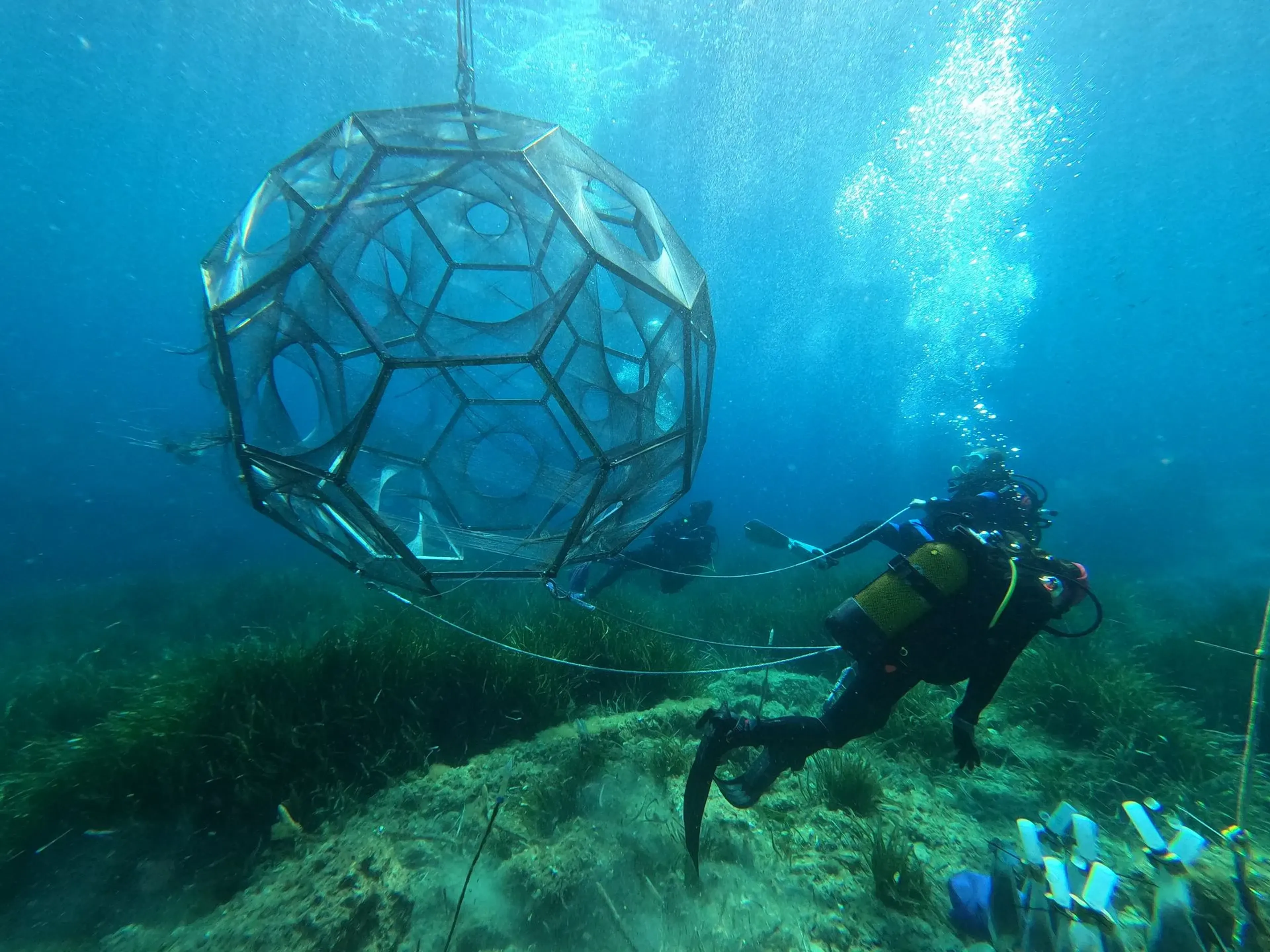
CREDITS: Kiki reef prototype in STARESO. rasaweber.com. Photo: Mathieu Kelhetter. Divers: Noemie Chabrier, Anja Wegner, Rasa Weber, Mathieu Kelhetter. Location: STARESO (FRR), 2023.
The »Biorock« technology remains controversial among marine biologists. Critical voices point to the accelerated growth of the corals due to the system and the resulting increased porosity of the coral bodies, which makes them less resistant to storms and anthropogenic influences. In addition, the system requires a large amount of hidden energy resources (constant 12 volts), which is particularly challenging for its deployment in countries of the Global South. The prototype serves as a tangible critical examination of the technology and the topos of human stewardship in the ocean. »Kiki« offers a vantage point on the phantasm of human hubris that suggests that the designer alone can create a controlled environment for the emergence of life.
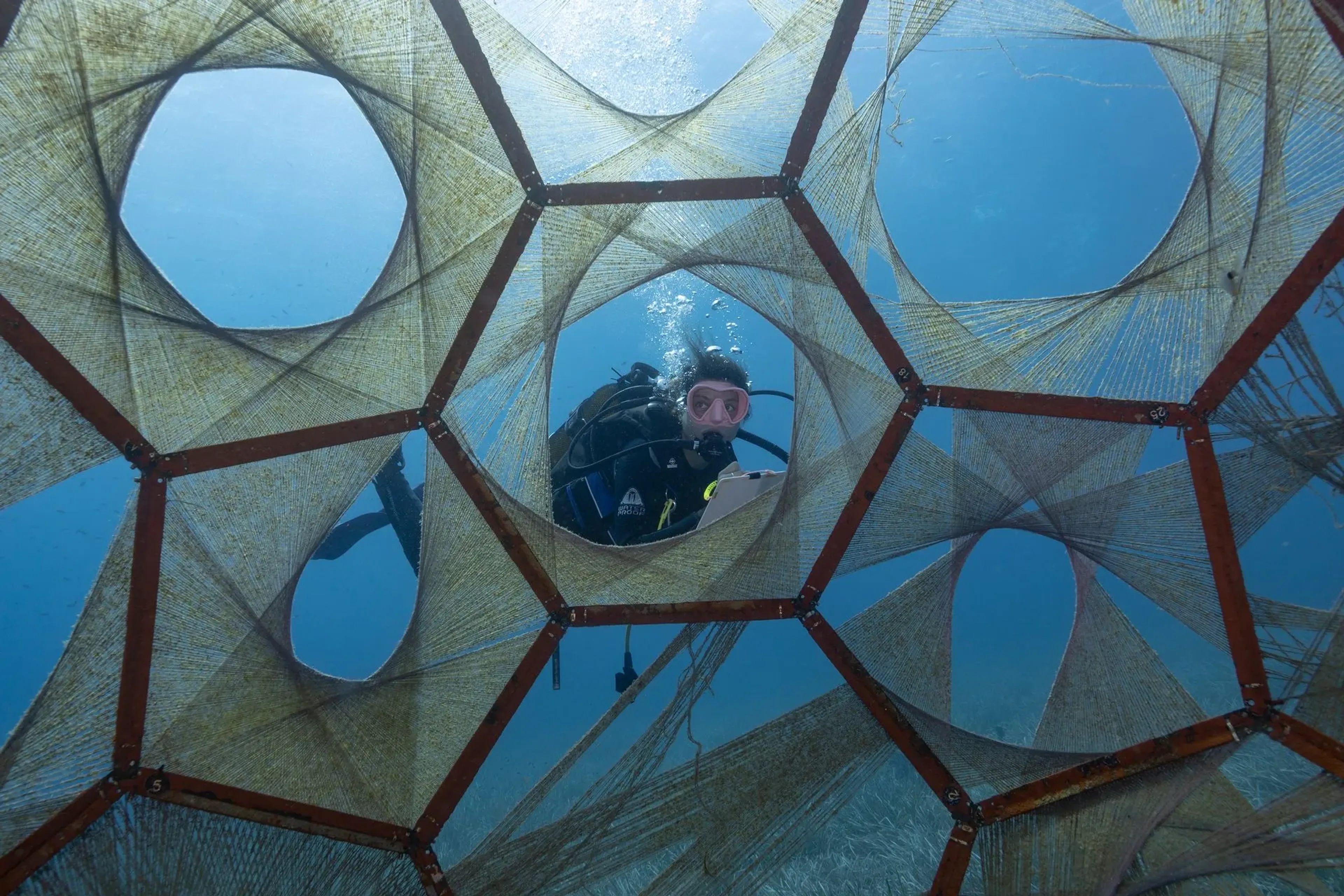
CREDITS: Kiki reef prototype in STARESO. rasaweber.com. Photo: Stéphane Jamme, @stepp_aquanaute. Divers: Noemie Chabrier. Location: STARESO (FRR), 2023.
»Kiki« remained in the Mediterranean for six months, slowly transforming into a habitat for various types of marine life. The prototype illustrates the collaboration with marine life, but also grapples with ocean forces, the seasons in the Mediterranean and significant time spans. In November 2023, »Kiki« was taken by a Corsican storm that tore the structure to pieces. The queer art of failure. To be continued.
CREDITS
Design & Research: Rasa Weber
Camera: Rasa Weber
Date: June 2023 - November 2023.
Location: STARESO - Station de Recherches Sous- marines et Océanographiques de Calvi, Corsica (FR)
Biorock technique:
Thomas Goreau
Wolf Hilbertz (1970)Material:
laser cut steel frames
conductive steel yarnDivers:
Noemi Chabrier
Sylvain Coudray
Arnaud Boulenger
Sandra Bracun
Stéphane Jamme
Leonie John
Michael Karle
Mathieu Kelhetter
Michaela Roger
Bram van der Schoot
Kelly Stiver
Rasa Weber
Anja Wegner
Lena Wesenberg
Aubin WoehrelCollaborators:
Jordan Lab - Max Planck Institute of Animal Behavior
Zurich University of the Arts
Linz University of Art and Design
Matters of Activity - Cluster of Excellence. Humboldt University of Berlin
Anja Wegner (behavioral biologist Jordan Lab)Internship: Mathieu Kelhetter (Design Academy Eindhoven, NL)
Photographers:
Noemi Chabrier
Sandra Bracun
Stéphane Jamme
Mathieu Kelhetter
Michaela Roger
Kelly Stiver
Rasa Weber
Aubin Woehrel
Sponsoring: Imattec, Bekaert, KiangFiber.Grant Support:
Traveling Grant University of Art and Design Linz (AT)
PROCOPE (Government of France-Embassy of France in Germany/DAAD)© 2023 rasaweber.com
All rights reserved.
